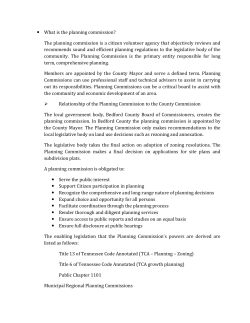
RENSSELAER POLYTECHNIC INSTITUTE TROY, NY EXAM NO. 2 INTRODUCTION TO ENGINEERING ANALYSIS
RENSSELAER POLYTECHNIC INSTITUTE TROY, NY EXAM NO. 2 INTRODUCTION TO ENGINEERING ANALYSIS (ENGR-1100) – Fall 14 NAME: Solution Section: ___________ RIN: _______________________________ Wednesday, October 15, 2014 8:00 – 9:50 Please state clearly all assumptions made in order for full credit to be given. Problem Points 1 25 2 25 3 25 4 25 Total 100 Score Problem #1 (25) 1 4 7 2 3 5 6 , 8 9 1 2 3 , 4 5 6 1 3 5 Determine (if not possible, explain why): 2 4 6 (a) (b) (c) and (d) Determinant of using any method. (e) If , what is the dimension of ? Write explicitly this identity matrix. 1 4 1 2 2 3 3 4 5 6 5 6 22 49 1 4 7 1 4 7 1 4 7 28 64 64 49 2 3 5 6 8 9 2 3 5 6 8 9 1 1 3 1 5 1 9 19 29 28 22 22 49 1 2 3 4 5 6 7 8 9 2 3 5 6 8 9 1 1 4 1 12 26 40 64 49 28 64 1 2 1 3 4 4 5 6 2 4 4 4 6 4 15 33 51 2 3 5 3 3 5 6 5 1 2 4 2 28 22 2 3 5 6 1 9 4 19 7 29 2 5 8 2 5 4 5 6 5 12 26 40 3 6 6 6 1.778 1.361 is not possible, since 1 2 3 2 5 2 2 4 5 4 (4) (4) (10) (5) (2) 3 6 9 and 1 3 3 3 5 3 15 33 51 28 64 (a) 0.7778 0.6111 (b) 22 49 do not the same dimension (c) 2 6 4 6 6 6 10 14 23 31 36 48 18 39 60 (c) det 1 1 1 2 4 5 7 8 5 9 3 2 3 6 9 8 6 is a square matrix. 6 5 8 1 3 2 6 9 4 9 3 2 3 → 4 6 7 9 7 6 12 3 3 9 3 4 5 7 8 4 8 7 5 det Size of is 3 3 and 1 0 0 0 0 0 1 0 0 1 (d) (e) Problem #2 (25) A 100-kg cylinder is supported by two cables AC and BC, which are attached to the top of vertical posts. A horizontal force P, making an angle with the x axis, holds the cylinder in the position shown in the figure below. 1. Identify the particle that needs to be analyzed to determine the tensions in the cables and the force P. (1 points) 2. Draw a complete and separate FBD showing the particle and all the forces acting on the particle. (8 points) 3. Express all forces in a Cartesian vector form (6 points) 4. Write the (scalar) equilibrium equations. (9 points) 5. Determine the magnitude of the force P. (2 point) 6. Determine the magnitude of the forces in the cables CA and CB. (4 points) (a calculator may be used for questions 5 and 6). Particle to be analyzed: C FBD z TCA 4.8 TCB P W x A=(0.0,-3.6,5.0); B=(0.0,4.8,5.0); C=(1.2,0.0,2.4) W 981k N y TCA TCAu CA TCA (0.2609i 0.7826 j 0.5652k) u CA 1.2i 3.6 j 2.6k ( 1 . 2 ) ( 3 . 6 ) ( 2 . 6 ) 2 2 0.2609i 0.7826 j 0.5652k 2 TCB TCB u CB TCB (0.2147i 0.8588 j 0.4652k) u CB 1.2i 4.8 j 2.6k (1.2) (4.8) (2.6) 2 2 2 0.2147i 0.8588 j 0.4652k P Pu p P (cos(300 )i sin(300 ) j 0.0k) P Pu p P (0.8660i 0.5000 j 0.0k) TCA TCB P W 0 Equilibrium: TCA (0.2609i 0.7826 j 0.5652k) TCB (0.2147i 0.8588 j 0.4652k) P (0.8660i 0.5000 j 0.0k) 981k N 0 0.2609TCA 0.2147TCB 0.8660 P 0 0.7826TCA 0.8588TCB 0.5000 P 0 0.5652TCA 0.4652TCB 981 N TCA 848.62 N TCB 1077.73 N P 522.86 N Problem #3 (30) A ball and a rod ABC are connected through a T junction. The ball and the rod weigh 20 lb. each as shown in the figure. The length of the rod AC is 2 ft. The point B is in the middle of the rod. Two 50-lb forces acting at points A and C, and a 50-lb-ft couple about the z-axis shown above point O are also exerted on the system. If 3 ft. and 60° , find: (a) The moment of the weight of the ball about point C. (5) (b) The moment of the weight of the ball about axis AC in Cartesian vector form. (5) (c) The resultant (both force and couple moment) of just the two 50-lb forces. (5) (d) The equivalent of the four forces and the 50-lb-ft couple moment at point O. (10) (e) Is it possible to find a point at which the equivalent of the four forces and the 50-lb-ft couple is just a single force? If yes, find the point(s). If not, explain why. (5) Let’s point be center of the ball. The moment of the weight of the ball about point : 6 1 1 6 0 20 0 60° ∙ 10 120 0 50 2 100 0 60° 120 60° 20 0 ; 120 ∙ 60° 60° 60° 2 60° 0 60° 60° 2 2 60° 0 60° 0 100 60° 60° 60° 60° 60° 20 60° 20 6 0 60° 120 60° 0 2 60° 50 0 20 60° 120 0 50 2 0 6 0 60° 60° 10 0 60° 120 lb-ft 60° 30 51.96 lb-ft (a) (b) (c) 20 20 20 20 20 50 20 50 86.60 50 86.60 50 86.60 50 ; 3 50 lb-ft 3 40 lb 86.60 lb-ft is perpendicular to . Therefore, it is possible to find a point at which the resultant is just a single force. Let’s call that point , , . 0 40 0 0 0 40 40 40 86.60 . If 0, then At any point on the line ( 2.165 ft, 0, 40 0 0 (d) 86.60 86.60/40, 0, and is arbitrary. :arbitrary) the resultant will be just 40 lb (e) Problem #4 (15) Draw a separate and complete free body diagram for the following: 1) A bent bar of negligible mass is supported by a pin at A and a roller at B (the angle =50o) y x o 50 Ay o 50 Ax FB 2) A bar of negligible mass is supported by rollers at A and B and a rope AD.
© Copyright 2025















